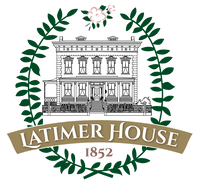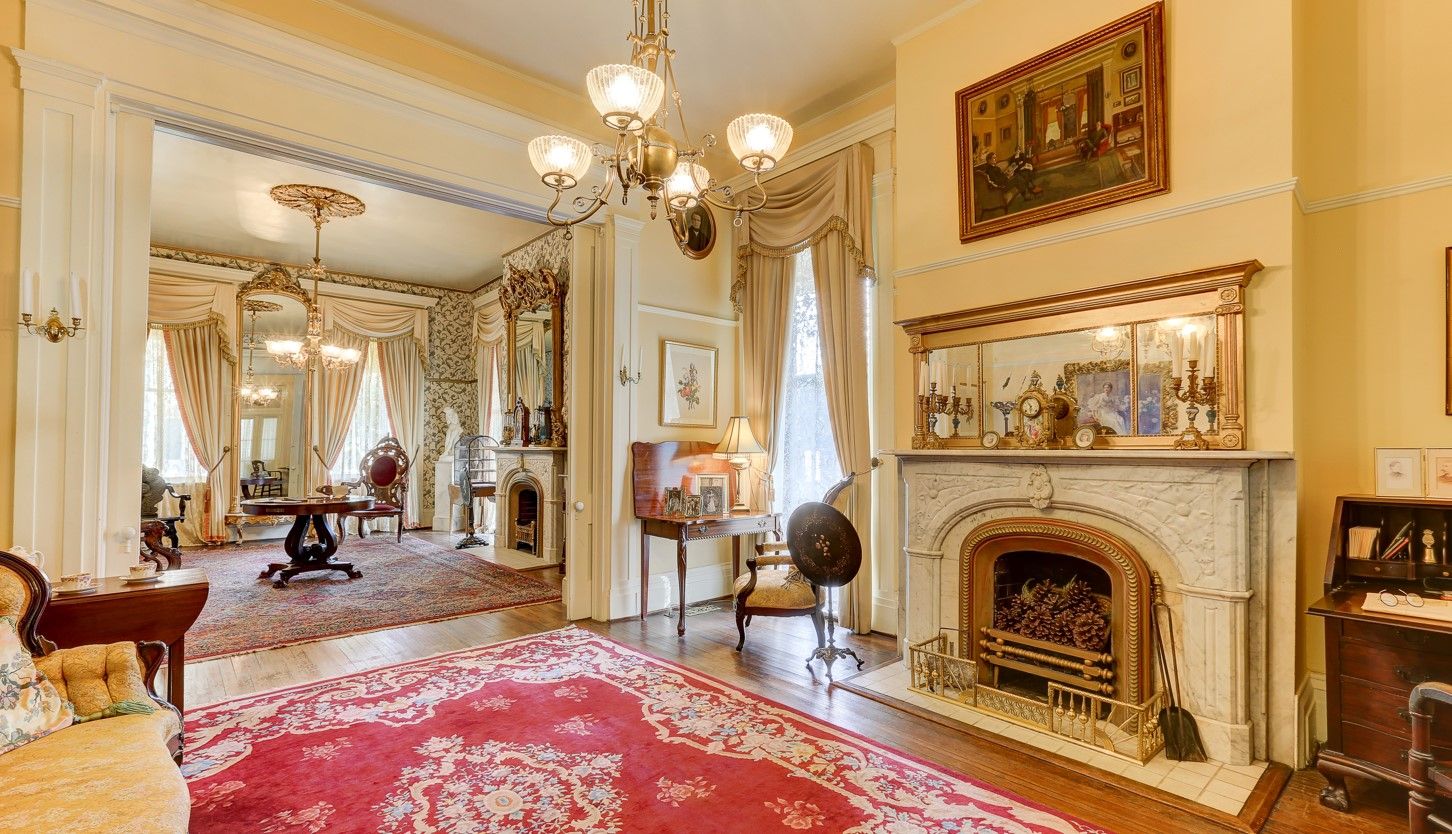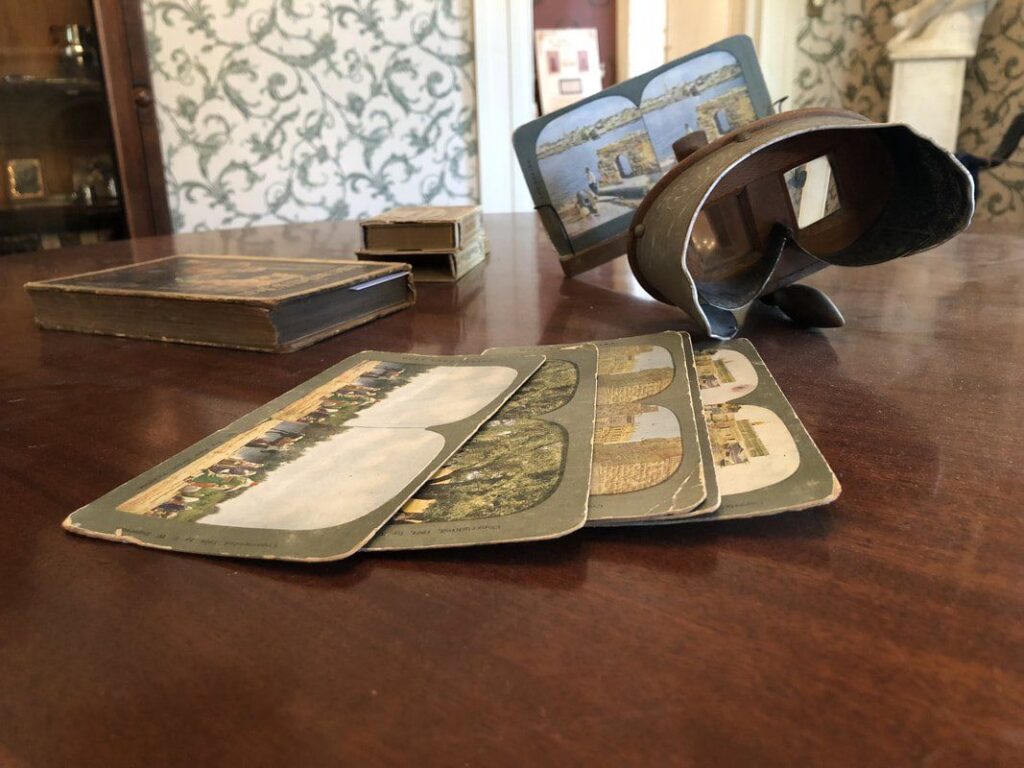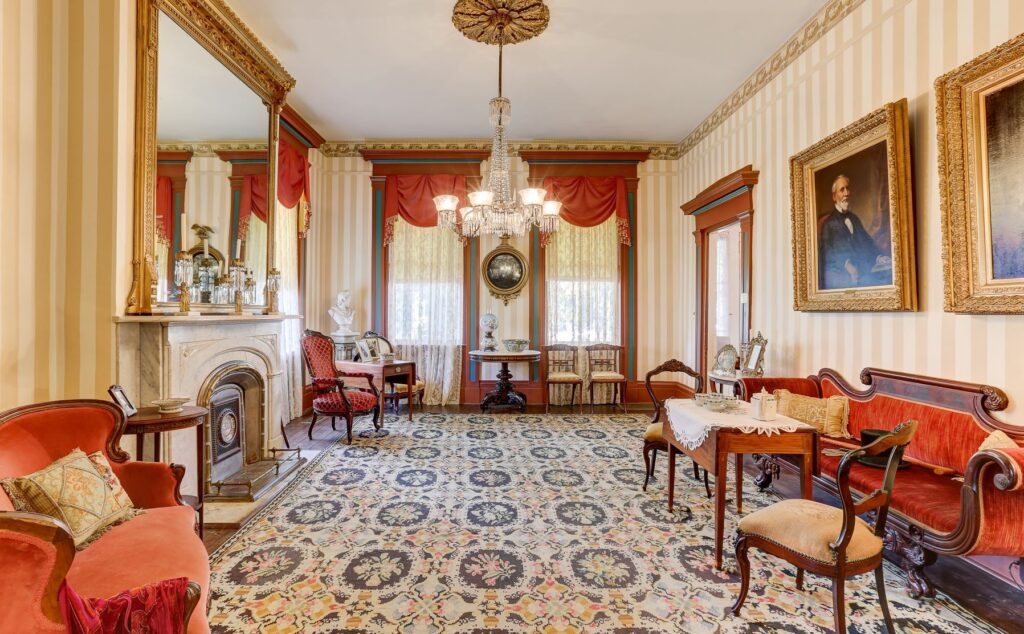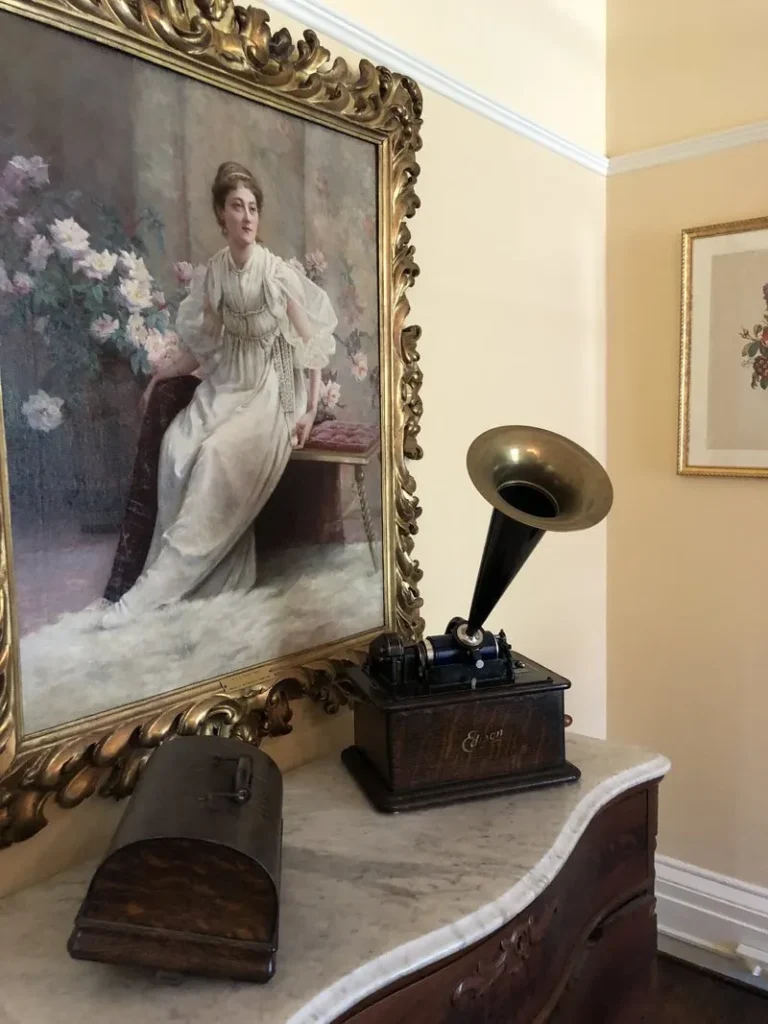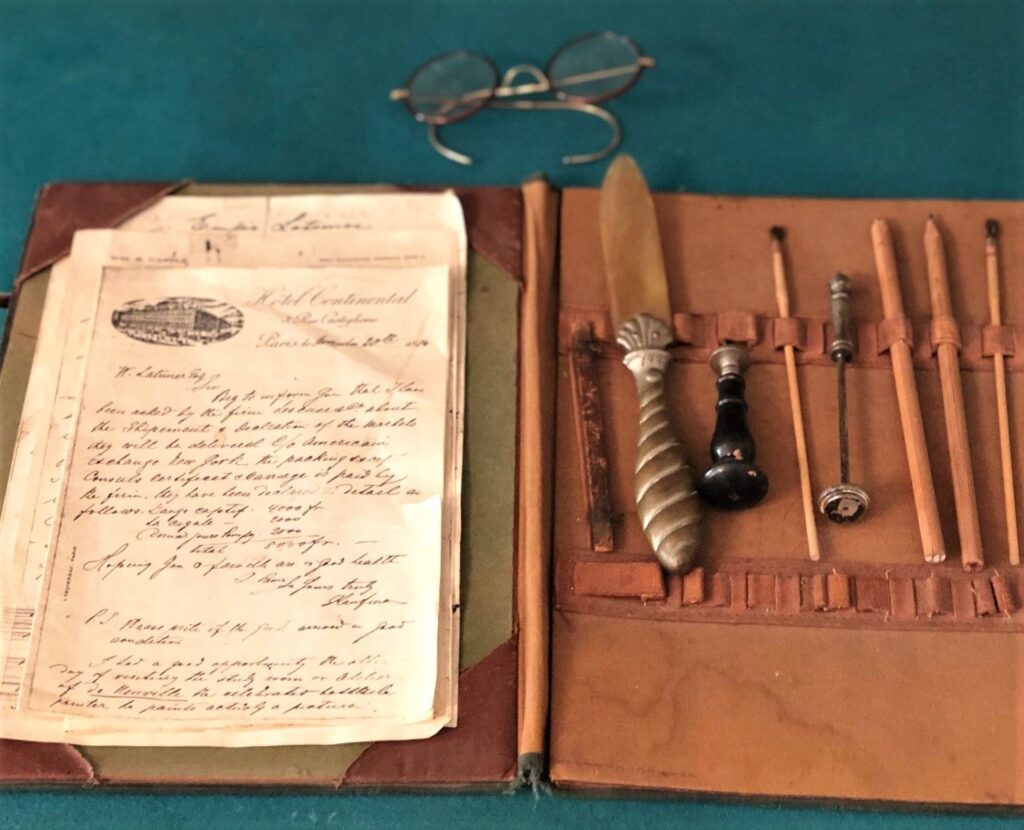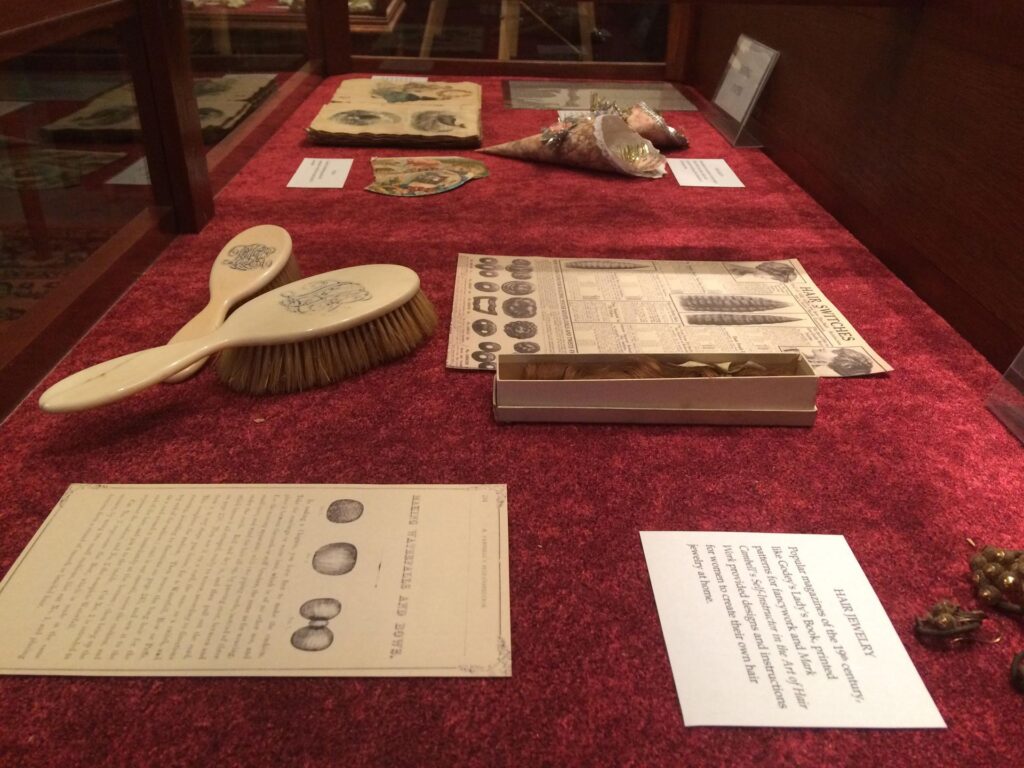Built in 1852, the Latimer House preserves the past as a museum of upper-class family and life in the 19th century Cape Fear region.
The iconic Latimer House has been a fixture of the historic district and the cornerstone of our commitment to preserving history for over six decades. Today, the mansion stands as a living testament to our shared past, hosting countless memories and stories.
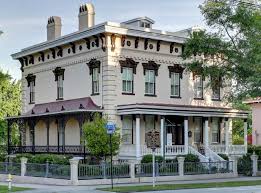
Latimer House isn’t just a building; it’s a repository of cherished moments and community connections. We invite you to join us in commemorating Wilmington’s unique history and people.
Step Back in Time
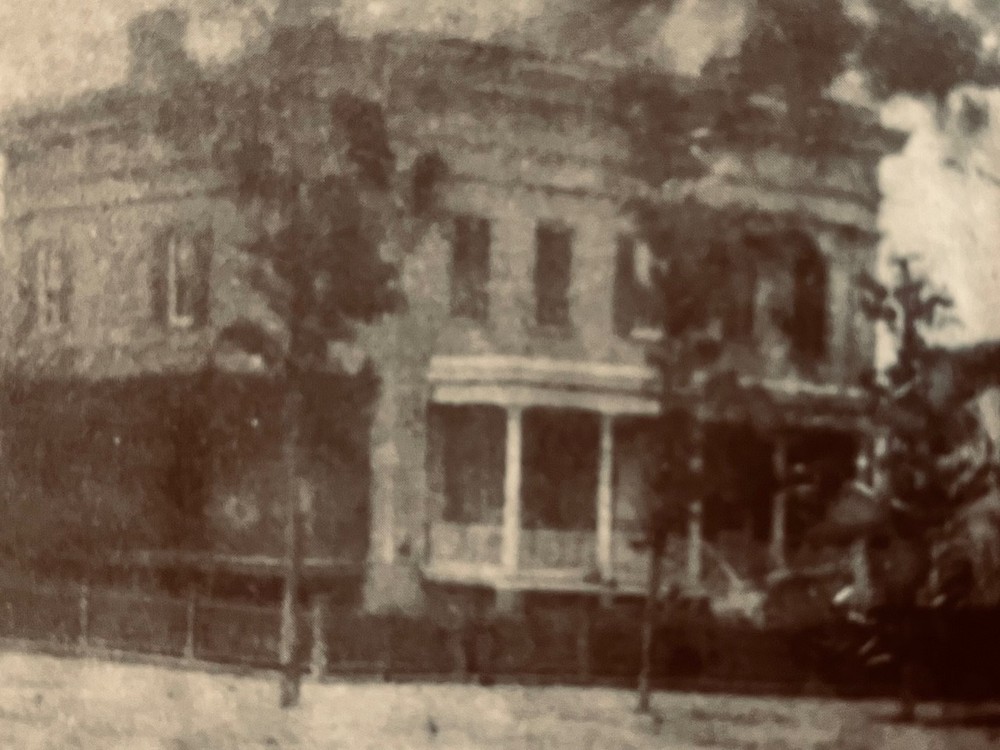
The Latimer House features 14 rooms containing more than 600 historical relics from the mid-19th century, roughly half of which are original to the home. In the style of the era, this beautiful home has a dining room, formal parlor, and plenty of Victorian touches to admire. The solid marble fireplaces and the opulent chandeliers (gasoliers later converted to electric power) are also original.
After marrying Wilmington native, Elizabeth Savage, Zebulon Latimer built the house on land gifted to them by Elizabeth’s uncle. Constructed in the Italianate Revival style, the four-story house was designed in perfect symmetry, with a central hallway and uniform layouts on each floor. From the outside, the home’s symmetry is also obvious, with its equal numbers and placement of pillars and windows on all four sides.
The Gardens and Grounds
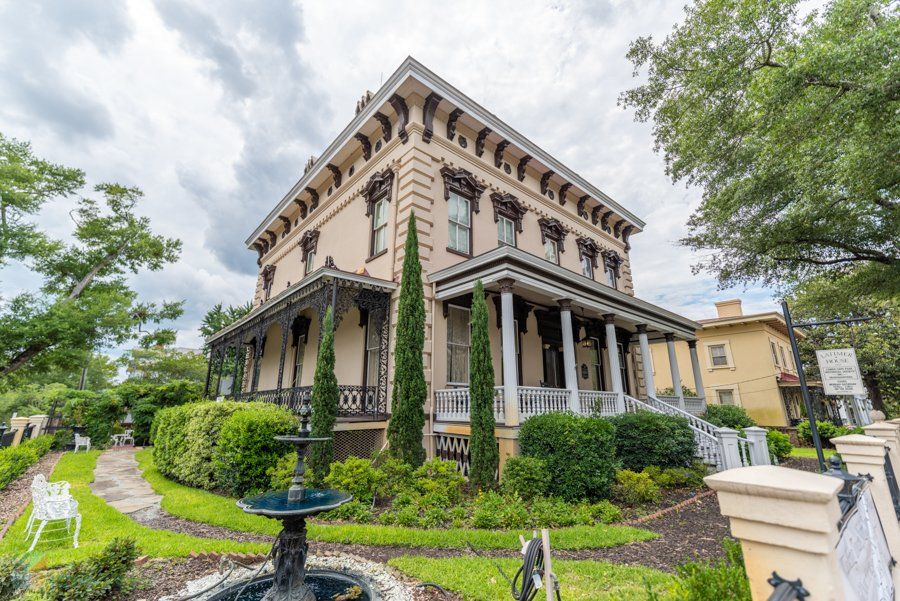
Outside the home are formal gardens surrounded by original lace-brick and stucco walls, which border and protect the property. Inside the walls are Victorian-era plants, shrubs, and trees, as well as an iron water fountain and slate path.
Thanks to support from the Cape Fear Garden Club, our annual improvements have resulted in a tranquil refuge in the heart of downtown Wilmington. Visitors to the museum are invited to relax on one of the courtyard benches and enjoy the serenity of the garden.
Also located on the grounds are the Latimer House slave quarters, restored after a major preservation effort by the Lower Cape Fear Historical Society, Inc. in the 1970s. Archaeologists recovered a number of artifacts from the site, which have been carefully preserved in an exhibit inside the home.
The house and gardens host special seasonal events, including art exhibitions, fundraisers, musical programs, and the much-loved Candlelight Walking Tour of Old Wilmington, providing unparalleled opportunities to delve into Wilmington’s rich history.
The Latimer Family

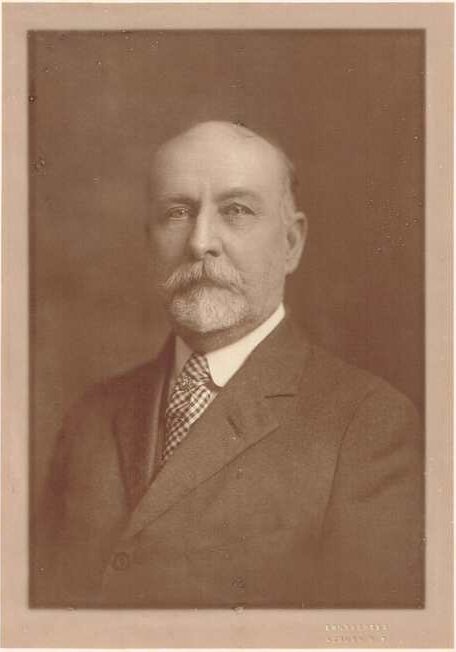
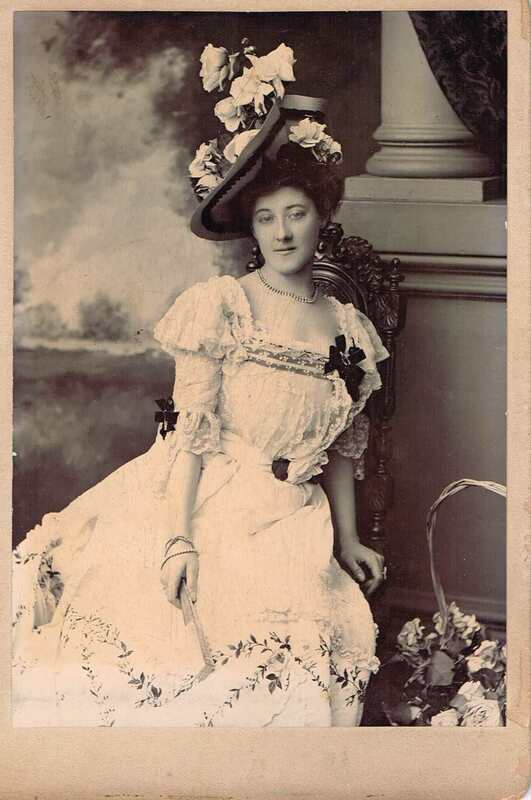
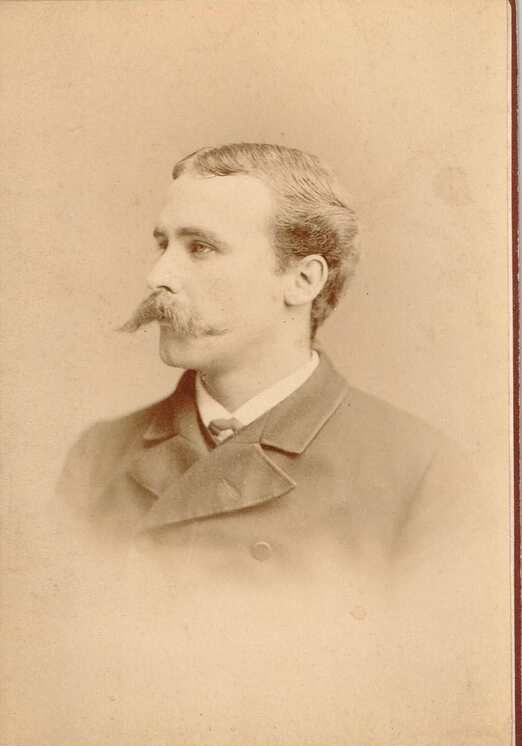
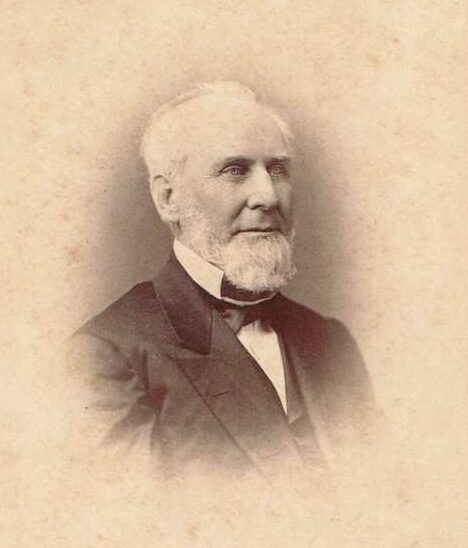
Zebulon and Elizabeth Savage Latimer had already married when they moved into their newly-built home in 1852. In the span of sixteen years, Elizabeth gave birth to nine children; only four boys survived to adulthood.
Their eldest, Henry Gould Latimer (1845–1929), was trained as an artist, painting works on display at the Latimer House today. Among his most popular works is his 1918 depiction of the famed Dram Tree. The second eldest son, William Latimer (1852–1923) attended Columbia University and practiced law. In 1888 he served as president of Wilmington and Seacoast Railroad, which took passengers from downtown Wilmington to Harbor Island near modern-day Wrightsville Beach.
William and his younger brother, Edward Savage Latimer (1857–1901), established the Acme Fibre Company, which produced pine fiber bagging and matting. The youngest son, Hebert Russell Latimer (1861–1887), succumbed to tuberculosis at age twenty-eight, but not before fathering two children, Hebert Russell Latimer, Jr. (1885–1966) and Empie Latimer (1886–1948). These Latimer grandchildren were raised in Europe following their father’s death and both graduated from Princeton University. They also served in World War I, with Hebert receiving the medal cross and Empie the Croix-de-Guerre for their bravery under fire.
When Hebert and Empie arrived in Wilmington at the end of the Great War, William Latimer and his wife, Margaret Iredell Meares (1862–1956), were residing at the stately Latimer House. They had an addition built onto the rear of the house in 1922 to accommodate a modern kitchen. Upon William’s death the following year, Margaret converted the guest rooms and began to take in boarders to supplement her income.
That same year, artist Elisabeth Augusta Chant (1865–1947) arrived in Wilmington. By 1930 Chant was renting a room at the Latimer House, and it was during this time she painted The Conversation, which depicts Margaret Iredell Meares Latimer, Herbert Russell Latimer, Jr. and Empie Latimer seated in the parlors. Since the Latimer House never left the family, many of the furnishings and decor depicted in The Conversation, which hangs in the back family parlor, appear in the same location today.
The Lower Cape Fear Historical Society, Inc.
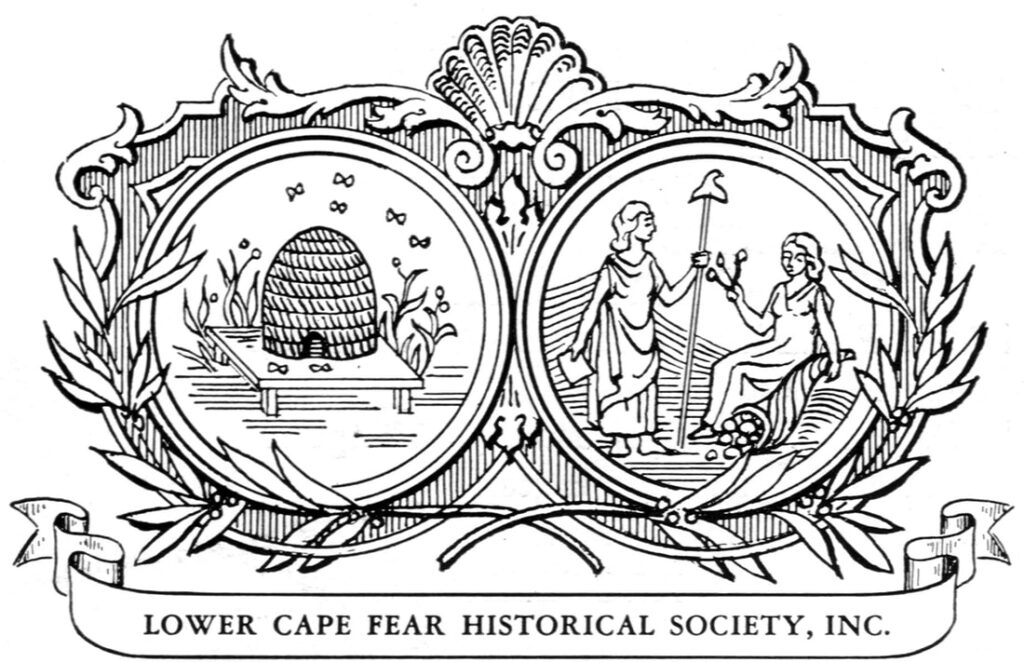
The Lower Cape Fear Historical Society, Inc. (LCFHS) is a 501(c)3 non-profit organization committed to the preservation and promotion of the history of the Lower Cape Fear region since 1956. The Society concentrates on preserving records and disseminating knowledge of local history.
The society has led the restoration and exhibition of the Latimer House, a noteworthy example of Victorian Italianate Revival architecture. Within the walls of Latimer, LCFHS has been instrumental is sharing a comprehensive collection of over 600 artifacts and an extensive archive and library with the community. The Society also published pathbreaking historical research since 1957 in the LCFHS Bulletin. Past issues are available in the Latimer Archive and will soon be made available online.
Embracing the mission of “Keeping the Past Present,” LCFHS relies on community support to develop exhibits, conduct educational programs, preserve its archives and collections, and serve as a reliable source for the region’s historical knowledge.
LCFHS is proud to be the first historic preservation organization in the lower Cape Fear region.
Board of Directors and Staff
Executive Committee
- Thomas Crittenden, Jr – President
- David Koenig, M.D. – Vice-President
- Joseph Whitted – Treasurer
- Alan Armstrong – Secretary
Directors
- Joan Ruden
- Jane Milliard
- Mary Blackburn
- Peggy Spencer
- John Debnam
- Curt Stiles, Ph.D.
Staff
- Ginger R. Davis, Ph.D., Executive Director and Historian
- Abby King, Executive Assistant
- Reid Copeland, Research Specialist
Advisory Council
- Lena Williams
- Lona Povovic
- Tim Jones
